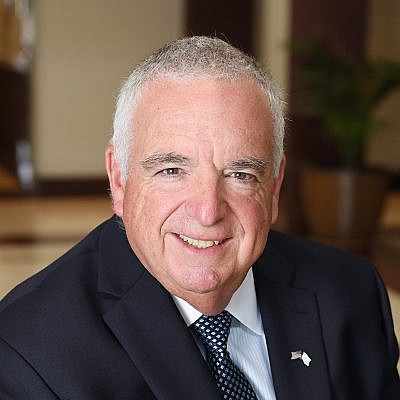 Sz. An-ski przed śmiercią
Sz. An-ski przed śmiercią
 100. ROCZNICA ŚMIERCI SZ. AN-SKIEGO
100. ROCZNICA ŚMIERCI SZ. AN-SKIEGO
dr Agnieszka Żółkiewska
8 listopada 2020 roku przypada 100. rocznica śmierci jednego z najwybitniejszych twórców literatury jidysz, Szlojmego Zajnwela Rapoporta, znanego pod pseudonimem literackim Sz. An-ski.
Sz. An-ski jest autorem przetłumaczonego na niemal wszystkie języki dramatu Der Dibek. Cwiszn cwej weltn („Dybuk. Między dwoma światami”). Rozgłos przyniosła mu także pieśń Di szwue („Przysięga”), która stała się hymnem żydowskiej partii socjalistycznej Bund.
Wykonanie Di szwue:
Koleje jego losu były skomplikowane. Urodził się 27 października 1863 roku w Czaśnikach na Białorusi. Początkowo pisał głównie po rosyjsku i w tym języku zadebiutował opowiadaniem na łamach pisma „Woschod”. Zasymilowany za młodu, długo szukał swojej drogi do żydowskości. Odnalazł ją m.in. przez język jidysz, w którym zaczął pisać pod wpływem twórczości Icchoka Lejbusza Pereca.
 An-ski w 1914 r.
An-ski w 1914 r.
Zmieniał nie tylko języki, w których pisał, ale również poglądy polityczne. Z rosyjskiego „narodnika” przeobraził się w zagorzałego zwolennika rewolucji i socjalizmu.
Ostatnie kilkanaście lat życia poświęcił badaniom etnograficznym. W latach 1912–1914 zorganizował pierwszą żydowską wyprawę etnograficzną na terenach Wołynia i Podola. Z folkloru żydowskiego, którego był namiętnym kolekcjonerem, czerpał natchnienie do swoich utworów.
8 listopada 1920 roku zmarł niespodziewanie w Otwocku. Wraz z jego śmiercią zakończyła się epoka najwybitniejszych przedstawicieli starszego pokolenia pisarskiego, które przyczyniło się nie tylko do narodzin nowożytnej literatury jidysz, ale także wywołało ferment ideowy w świecie żydowskim, zmieniając go na zawsze. „Okres ten wstrząsnął podstawami życia żydowskiego, zmiótł dawnych przywódców duchowych i wysunął nowe talenty” – twierdzi Nachman Majzel.
 An-ski przed śmiercią
An-ski przed śmiercią
An-ski spoczywa na cmentarzu żydowskim przy ul. Okopowej w Warszawie obok dwóch innych pisarzy, swoich przyjaciół, Icchoka Lejbusza Pereca i Jankewa Dinezona.
Akcja „Mój An-ski/Mayn An-ski”
Polskie Towarzystwo Studiów Jidyszystycznych pragnie uczcić 100. rocznicę śmierci Sz. An-skiego, ogłaszając akcję czytania utworów tego pisarza.
Zachęcamy do nagrania krótkiego filmu, na którym czytają Państwo wybrany przez siebie utwór An-skiego (fragment, cytat itp.). Nagrania należy przesłać na adres e-mail: ptsj.sekretariat@gmail.com. Filmy zostaną opublikowane na Facebooku Towarzystwa.
Wszystkim zainteresowanym udziałem w akcji polecamy kolekcję dzieł Sz. An-skiego dostępną online w bibliotece cyfrowej Polona.
Zachęcamy Państwa do wspólnego złożenia hołdu Wielkiemu Pisarzowi!

Zawartość publikowanych artykułów i materiałów nie reprezentuje poglądów ani opinii Reunion’68,
ani też webmastera Blogu Reunion’68, chyba ze jest to wyraźnie zaznaczone.
Twoje uwagi, linki, własne artykuły lub wiadomości prześlij na adres:
webmaster@reunion68.com



